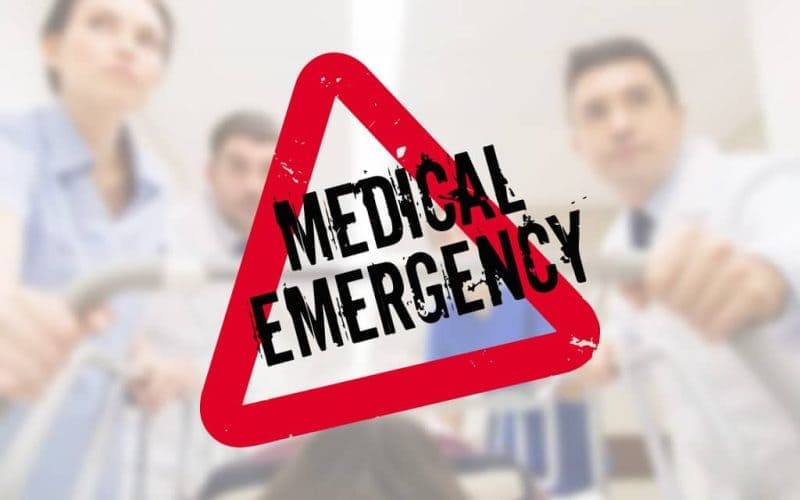What are the symptoms of choking?
The symptoms of choking vary depending on the severity of the airway obstruction. Here are common signs:
Partial Airway Obstruction:
- Coughing (often forceful or frequent)
- Wheezing or high-pitched noises when trying to breathe
- Difficulty breathing but still able to get some air
- Gagging
- Panic or distress (may be visibly anxious)
- Red or flushed face
Complete Airway Obstruction:
- Inability to speak, cough, or breathe
- Silent panic (often clutching the throat, also known as the universal choking sign)
- Turning blue (cyanosis) due to lack of oxygen
- Loss of consciousness if the airway is not cleared quickly
- Weak or ineffective cough if there’s some minimal airflow
If a person shows signs of severe choking, it’s a medical emergency, and immediate help (like performing the Heimlich maneuver) is needed.
What are the causes of choking?
Choking occurs when an object blocks the airway, preventing air from reaching the lungs. Here are common causes:
1. Food-related Causes:
- Large or poorly chewed food (e.g., steak, hot dogs, or chunks of fruit)
- Hard foods like nuts, candy, or raw vegetables
- Sticky foods (e.g., peanut butter)
- Bones from fish or meat
2. Foreign Objects:
- Small objects like toys, coins, or buttons (common in children)
- Dental appliances (e.g., loose dentures)
3. Swallowing Difficulties (Dysphagia):
- Medical conditions like stroke, Parkinson’s disease, or other neurological disorders
- Aging (weakened swallowing muscles)
- Gastroesophageal reflux disease (GERD) leading to improper swallowing
4. Alcohol or Drug Use:
- Impaired chewing or swallowing due to intoxication
- Reduced coordination of the throat muscles
5. Talking or Laughing While Eating:
- Distraction can lead to improper chewing or swallowing, increasing the risk of choking.
Preventive measures like cutting food into small pieces, chewing thoroughly, and staying attentive while eating can help reduce the risk of choking.
What is the treatment for choking?
The treatment for choking depends on the severity of the airway obstruction. Here’s how to respond to choking incidents:
1. For Mild (Partial) Airway Obstruction:
- Encourage the person to keep coughing. If they are coughing effectively and can speak, the airway is only partially blocked. Let them try to clear it on their own.
- Stay with them to monitor the situation in case it worsens.
2. For Severe (Complete) Airway Obstruction:
If the person cannot breathe, speak, or cough, immediate action is needed:
Conscious Adult or Child (Over 1 year):
- Perform the Heimlich Maneuver (Abdominal Thrusts):
- Stand behind the person and wrap your arms around their waist.
- Make a fist with one hand and place it just above their navel.
- Grasp your fist with your other hand.
- Perform quick, upward thrusts to compress the diaphragm, forcing air from the lungs to dislodge the object.
- Repeat thrusts until the object is expelled or the person becomes unconscious.
Unconscious Adult or Child:
- Call emergency services immediately.
- Begin CPR:
- Lay the person flat on their back.
- Open their airway by tilting the head back and checking for breathing.
- If no breathing, begin CPR with chest compressions. Before giving breaths, check for any visible objects in the mouth and attempt to remove them.
3. For Infants (Under 1 year):
- Back Blows and Chest Thrusts:
- Sit or kneel, holding the infant face down on your forearm, supporting their head and neck.
- Give 5 firm back blows between the infant’s shoulder blades.
- If the object doesn’t come out, turn the infant face-up and perform 5 chest thrusts (use two fingers to press on the breastbone).
- Repeat the cycle of 5 back blows and 5 chest thrusts until the object is expelled or the infant becomes unresponsive.
4. Seek Medical Attention:
- Even after successful choking treatment, it’s important for the person to get medical evaluation, as choking incidents can lead to complications, such as damage to the throat or lungs.
Knowing how to perform these maneuvers can save lives in choking emergencies.

Leave a Reply
You must be logged in to post a comment.